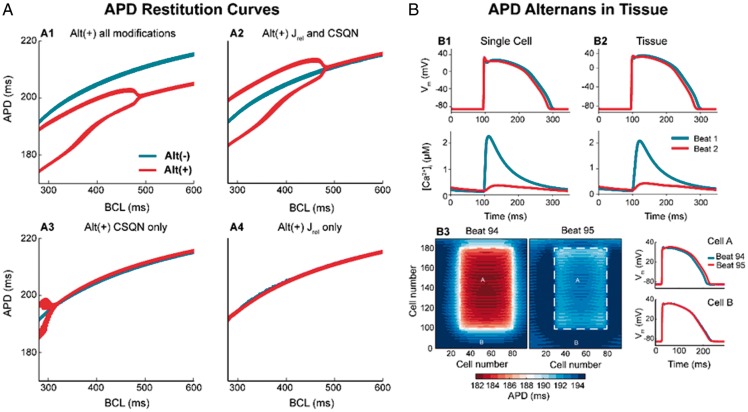Figure 7.
Simulation study. (A) APD restitution curves showing the reliance on substrate modification for alternans promotion. Full remodelling (A1) as well as Jrel and CSQN modification (A2) result in APD alternans across the same cycle lengths (bifurcation of the red line), while modifications of only CSQN (A3) or Jrel (A4) does not promote APD alternans. (B) Comparison of AP and Ca2+ transient from single cell simulation (B1) and tissue simulation (B2) showing that alternans is preserved in tissue. B3: results of the two-dimensional tissue simulation: a patch of alternans-susceptible cells (patch A, delimited by a white dashed line) surrounded by a larger patch of alternans-resistant cells (patch B) is show for two consecutive beats (beat number 94 and 95). Red and blue represent short and long APD, respectively. A change in APD between the two consecutive beats is observed within the patch of alternans-susceptible cells (Patch A, with red turning light blue) but not in the patch of alternans-resistant cells (Patch B, with blue remaining blue). On the right, action potential traces for both beats from patch A (top) and B (bottom) show that alternans only appears within the patch of alternans-susceptible cells (ΔAPD = 11 ms). APD, action potential duration; CSQN, Calsequestrin; Jrel, sarcoplasmic Ca2+ release (flux).

